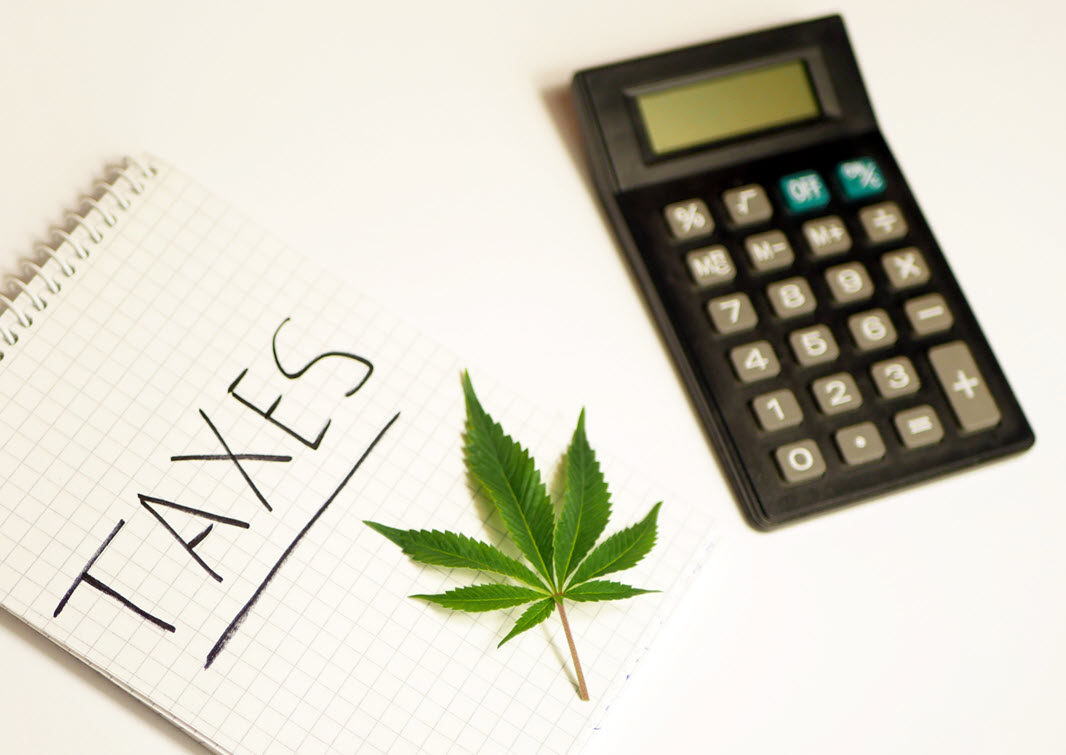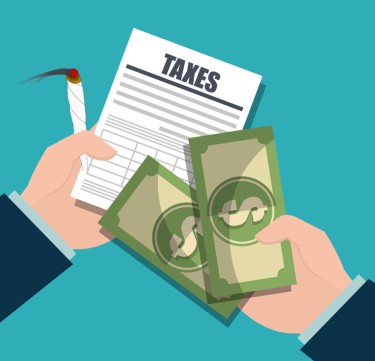
$10.4 billion in tax revenue from legal cannabis sales, but where is all that money going?
The financial aspect of the cannabis industry is certainly getting a lot of attention lately, and it’s easy to see why. As the industry grows at an amazing rate, many states are looking to rake in the big bucks in terms of tax and licensing revenue. Which states have legal markets for medical and recreational marijuana? Which states have the most revenue? How are these states using this marijuana revenue? Read on as we provide answers to these questions and many more.
States in the US recorded $10.4 billion in tax revenue from cannabis sales at the end of 2021. This figure doesn’t include revenue from medical marijuana distribution. From this alone, it’s easy to see why many entrepreneurs are trying to get into the frenzy of the cannabis industry. Likewise, states try to get involved with the law through legalization and tax administration to generate revenue.
Tax revenue from the sale of marijuana varies from state to state due to a number of factors. First, cannabis is illegal at the federal level, meaning states with legal markets have full jurisdiction over policies and tax regulations. States that are longer established with the program and have fully functioning markets and strong populations are also expected to generate huge tax revenues. Because of this, states like California, Washington, and Colorado could surge above $1,294,632,799, $559,500,000, and $423,486,053, respectively. Other high yielding states include Illinois, Arizona, Michigan and Massachusetts.
Colorado and Washington have spearheaded the push to legalize recreational cannabis, with steps taken as early as 2012. With final legislation in 2014 and 2015, the states were able to generate significant revenues. California also raked in $3,362,314,514 in revenue after launching its recreational marijuana market in 2018. This excess revenue certainly benefited some of these states as they faced deficits thanks to the COVID-19 pandemic.
Alaska
Retail marijuana sales in Alaska began in October 2016 after a 2014 vote. The state has the Marijuana Control Board charged with the responsibility of tracking cannabis operations and issuing licenses. The state has seen a steady increase in tax revenue over the years, resulting in 2021 sales of $30,054,250. Growers in Alaska are taxed at $50 per ounce for mature flowers and $25 per ounce for immature flowers. Alaska allocates 25% of revenue to the general fund, 25% to the Marijuana Education Fund, and 50% to the Department of Public Safety, Corrections, and Health and Human Services.
Arizona
After voters approved the 2020 marijuana legalization initiative, Arizona sanctioned the recreational market. The Arizona Department of Health and Human Services is responsible for all activities such as regulations and licensing. The state had tax revenue of #217,553,000 at the end of 2021. Arizona levies two types of taxes on marijuana, a 16% excise tax and a transaction privilege tax. The excise tax revenue is then allocated to the Highway User Fund, community colleges, metropolitan police, fire districts, the Justice Reinvestment Fund, and the Attorney General.
California
The Department of Cannabis Control was burdened with taxing and licensing marijuana operations after the state began retail sales in January 2018. Four years later, the state has the largest cannabis industry in the country. California taxes $9.65 per ounce of flowers, $2.87 for leaves, and $1.35 for the fresh plant. The revenue from the tax will initially be used to cover regulatory and research costs. After that, 60% will go to children’s anti-drug programs, 20% to environmental programs, and 20% to public safety.
Colorado
The state has the oldest retail cannabis market in the country and a solid allocation plan. Taxes on marijuana include a 15% wholesale tax and 15% retail excise tax while it is exempt from general sales tax. The revenue collected is then split 9 to 1 between the state and local government. The state further splits its portion between the general fund (15.56%), the state public school fund (12.59%), and the marijuana tax treasury fund (71.85%).
Illinois
Recreational cannabis was licensed in Illinois in May 2019 and retail sales began in January 2020. Illinois taxation of marijuana is 7% of wholesale taxes. There are also special levies on retail taxes such as 10% on products with 35% THC or less, 25% on products with 35% THC or more, and 20% on fortified products. The revenue generated is then split between the general fund (35%), the Illinois Recover, Reinvest and Renew program (25%), mental health and substance abuse (20%), state accounts (10%) and local government (8%). . and public education (2%).
new York
Recreational cannabis in New York was not legalized until March 2021 after being signed into law by the governor. The government expects revenues to exceed $20 million after the first year. New York taxes 9% retail tax and 4% state tax. It will also impose 0.5 cents/mg THC in flower, 0.5 cents/mg THC in concentrate, and 0.5 cents/mg THC in edibles. She wants to use the income to compensate for the decline in income from taxable cigarette consumption.
Washington
After legalization in 2012, retail cannabis sales in Washington began in July 2014 and has grown ever since. The state collects a 37% retail tax on marijuana and a 6.5% retail sales tax. The state exempts medicinal cannabis from sales tax. Washington allocates marijuana revenue to various sectors and projects. In 2020, proceeds were allocated to the State Health Professions Account, the State Board of Health for Research, the University of Washington for marijuana-related education programs, and other research departments.
It’s obvious that the money goes to many places depending on which state you’re focusing on. Marijuana tax revenue helps most states deal with various financial burdens. Hopefully more states will join the fray soon so everyone can benefit!
GOVERNMENT TAX REVENUE FROM WEED, READ MORE…

CANNABIS TAX REVENUE BY STATE, WHAT CAN YOU EXPECT?

Post a comment: